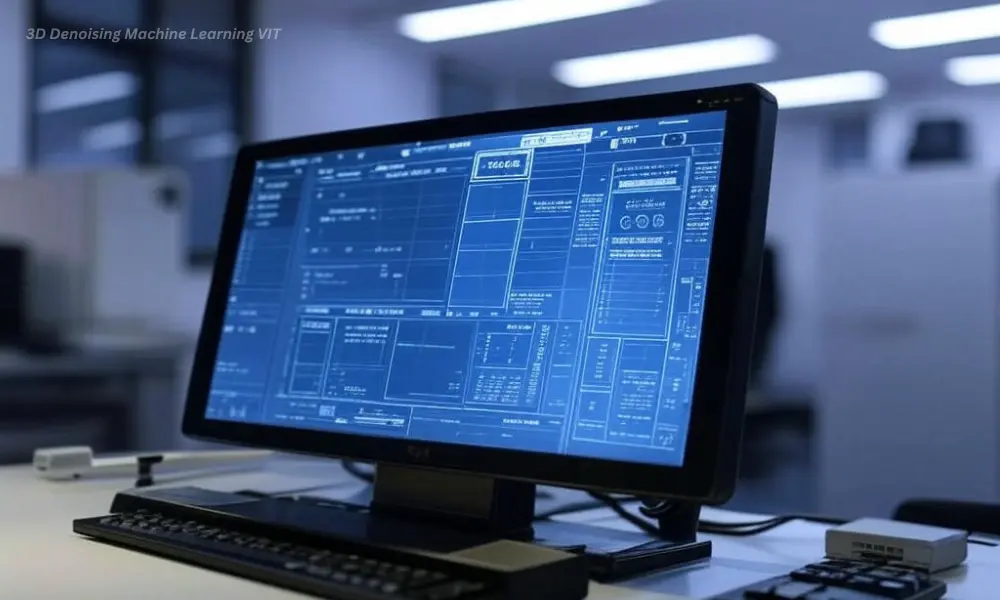3D Denoising Machine Learning VIT: The Ultimate Guide to Clean and Clear 3D Data

If you’re trying to remove noise from complex 3D data using AI, then you’re exactly where you need to be. The use of 3D denoising machine learning VIT (Vision Transformer) has rapidly grown in popularity for one simple reason — it works. Whether you’re cleaning up 3D medical scans or trying to clarify LiDAR data for a self-driving car, Vision Transformers are helping produce high-quality results faster and smarter than ever before.
Table of Contents
What is 3D Denoising?
3D denoising is the process of removing unwanted, random variations (or “noise”) from 3D data. Unlike traditional 2D images, 3D data has depth, making it more complex to process. That’s why specialized approaches are needed.
This process ensures better:
- Visualization
- Object recognition
- Segmentation in downstream tasks
Understanding Noise in 3D Data
In real-world data collection, noise is almost unavoidable. It can come from:
- Sensor errors (e.g., LiDAR, MRI, CT scans)
- Low lighting conditions
- Data compression
Noise degrades the quality of your 3D model, making it hard to detect shapes, surfaces, and details. That’s where denoising techniques come in — especially using machine learning.
The Need for Machine Learning in 3D Denoising
Traditional denoising methods use rules-based filters like median or Gaussian blurring. They often:
- Remove actual data along with noise
- Perform poorly on complex textures
- Don’t adapt well to various noise patterns
Machine learning, on the other hand, learns from data and adapts to different types of noise — and does so with incredible accuracy.
Introduction to Vision Transformers (VIT)
Vision Transformers (VIT) are a type of deep learning model that process image data in a unique way. Instead of using convolutional layers like CNNs, they split the image into patches and learn global relationships using self-attention mechanisms.
Why is this helpful for 3D denoising?
- It considers long-range dependencies
- Recognizes patterns across entire volumes, not just local areas
How 3D Denoising Works Using Machine Learning VIT
Here’s how the process usually works:
- Input: Noisy 3D volume is provided (e.g., voxel grid or point cloud)
- Patch Generation: Data is divided into smaller 3D patches
- Embedding: Patches are converted into vectors for processing
- Transformer Encoding: Self-attention helps identify and isolate noise
- Reconstruction: Output is combined into a denoised 3D version
This results in cleaner models with minimal information loss.
Benefits of Using VIT for 3D Denoising
High Precision
VIT detects intricate noise patterns across multiple dimensions.
Efficient Scaling
Easily handles large and high-resolution data sets.
Reduced Manual Tuning
Fewer heuristics and manual parameter adjustments needed.
Common Applications
Medical Imaging
- Enhances MRI and CT clarity
- Reduces patient exposure by enabling low-dose scans
Autonomous Vehicles
- Improves LiDAR input for obstacle detection
- Supports better path planning
AR/VR and Gaming
- Creates more immersive environments
- Reduces texture flickering and geometry bugs
Robotics
- Enhances object recognition and navigation
VIT vs Traditional CNN for 3D Denoising
| Feature | CNN | VIT |
|---|---|---|
| Local vs Global View | Focuses on small regions | Sees the big picture |
| Data Efficiency | Needs more data | Can generalize better |
| Training Speed | Faster to train | Needs more compute power |
| Accuracy on Complex Noise | Moderate | High |
Tools & Frameworks to Get Started
- PyTorch – Great for custom training pipelines
- TensorFlow – Offers pre-built VIT models
- PyTorch3D / Open3D – Libraries for 3D data manipulation
- HuggingFace Transformers – Transformer utilities
Training a VIT for 3D Denoising
Data Preparation
- Collect clean and noisy 3D datasets (ModelNet, ShapeNet)
- Apply synthetic noise for training
Augmentation Techniques
- Rotate, scale, add noise
- Use dropout and attention masking
Loss Functions
- MSE (Mean Squared Error)
- SSIM (Structural Similarity Index)
- Perceptual Loss (for better visual similarity)
Real-World Case Studies
Healthcare
Using VIT-based denoising on 3D brain MRI improves tumor visibility without needing contrast agents.
Self-Driving Cars
Cleaner LiDAR data with fewer false positives leads to safer navigation.
Challenges and Limitations
- High compute requirements: Training large VITs can be expensive
- Data scarcity: High-quality 3D datasets with noise/clean pairs are limited
- Explainability: Transformer decisions are harder to interpret than CNNs
The Future of 3D Denoising with VIT
- Self-Supervised Learning: Reduce the need for labeled data
- Edge Deployment: Real-time denoising on mobile or embedded devices
- Hybrid Models: Combining CNN and VIT for the best of both worlds
Conclusion
When it comes to cleaning up 3D data, Vision Transformers are game-changers. With the ability to understand complex patterns and make smarter decisions, 3D denoising machine learning VIT is the key to unlocking better visuals, safer systems, and more reliable results in real-world applications.
Whether you’re a researcher, developer, or tech enthusiast — now is the perfect time to start exploring this powerful technology.
FAQs
Can Vision Transformers work with any kind of 3D data?
Yes, they can handle voxel grids, point clouds, and 3D meshes with proper preprocessing.
Is it hard to train a VIT for 3D denoising?
It requires good hardware and data, but pre-trained models and frameworks can speed things up.
Are there open-source datasets for training?
Yes — ModelNet, ShapeNet, and S3DIS are commonly used in academic research.
Can I use 3D denoising in real-time applications?
With optimized models and GPU support, real-time denoising is achievable.
What’s the future of 3D denoising using machine learning?
Expect to see more edge computing, better models with fewer parameters, and advancements in self-supervised learning.






